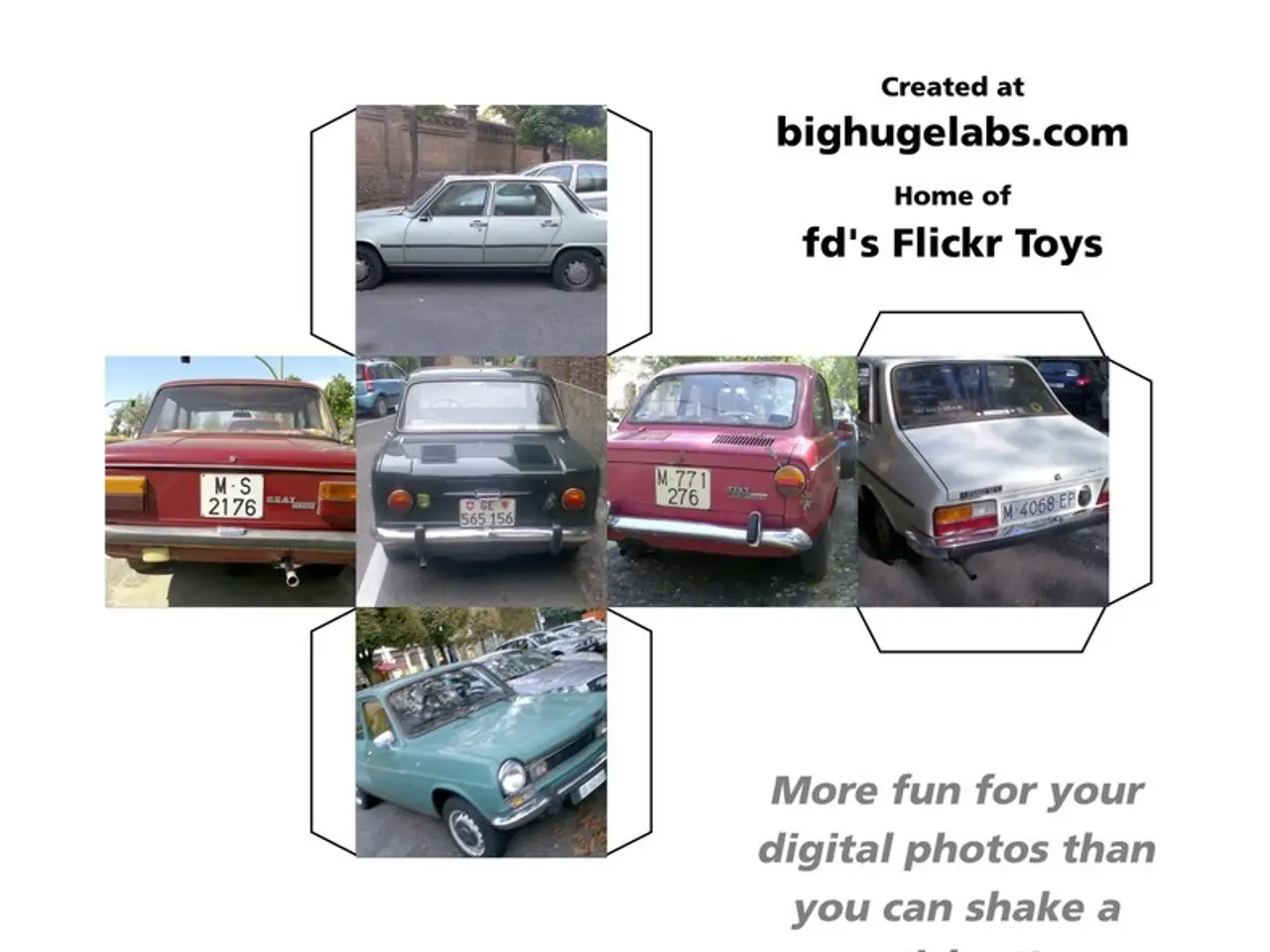Utilizes cookies to enhance user experience on Autovista24 platform
In the ever-evolving world of automotive manufacturing, several key developments have emerged in recent times.
Battery-electric vehicles and full hybrids have posted modest gains in Europe, with a 1.3% and 0.7% increase respectively. However, the residual values (RVs) of three-year-old used cars across Europe, including Austria, France, Germany, Italy, Spain, Switzerland, and the UK, saw a decrease in April compared to March. The RVs of three-year-old vehicles at 60,000km held on to a smaller percentage of their list price during this period.
Plug-in hybrids struggled across Europe in terms of RVs, but the UK remained relatively stable, with RVs falling only 1pp. Italy saw the steepest year-on-year drop in RVs, down 4.6 percentage points (pp) compared to April 2024.
Across the Atlantic, the 25% US tariff on imported vehicles and parts, introduced in March, sparked industry concern. However, President Donald Trump's executive orders have since eased these tariffs, allowing carmakers to offset some costs and avoid layered duties. This move has been welcomed by major manufacturers, but global forecasts have dimmed. EV Volumes has cut its 2025 light-vehicle sales growth projection to 1.2%, down from 1.9% in March.
The tariffs have led to increased vehicle prices in the US, with some manufacturers, such as Mitsubishi, increasing prices by about 2.1%. Others, like Mercedes, have absorbed the costs without raising sticker prices for 2025 models. This situation has disrupted the electric vehicle (EV) market by diminishing the competitiveness of US manufacturers. Analysts now project that battery electric vehicles will only make up 17% of US sales by 2030, down from an earlier 31% estimate.
Meanwhile, China's light-vehicle sales are forecast to rise by 2.7% in 2025, thanks to government support for new energy vehicles. However, foreign brands face competitive challenges there.
In Europe, the outlook for light-vehicle sales is projected to grow by just 0.15% in 2025. Notably, VWFS has announced it will wind down its Heycar marketplace division, with operations expected to be wrapped up before the end of the summer. VWFS will absorb Heycar's technology and expertise into a newly formed subsidiary.
These developments paint a picture of a global automotive industry facing a turbulent year in 2025 due to shifting tariffs and economic uncertainty. The combination of tariffs and evolving subsidy policies continues to create volatility and uncertainty in the near- and mid-term outlook for the industry.
The financial implications of the 25% US tariff on imported vehicles and parts have led to increased vehicle prices, disrupting the competitiveness of electric vehicle (EV) manufacturers within the automotive industry. Meanwhile, China's light-vehicle sales are forecast to grow, despite foreign brands encountering competitive challenges within the industry.




